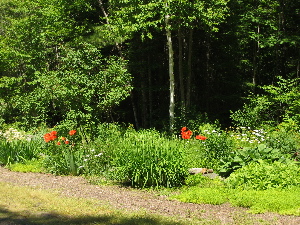GARDENING CHORES FOR MARCH AND A BIG MOVE!
Be sure to fertilize that poinsettia.
Check your stored bulbs to be sure they're not being eaten by
mice.
Also, remove forced bulbs from cold storage. Put them in a cool place until they begin to sprout, then bring them into the place you want to have them bloom.
This is a good time to buy summer blooming bulbs.
Start seeds inside.
Begonias can be started in peat moss.
If you haven't done so yet, start planning a new garden!
This is a good time to send in a soil sample for testing...if you can get to it!
If you have a lawn, this is a good time to send the mower in for
a tune-up.
Fruit trees should be pruned of dead and diseased branches. Check
a reference book and give them a general pruning as well.
It is time for Dormant Pruning. This is the process whereby you prune the trees while they are in a dormant (non-growing) state.
Keep your pruning shears away from spring blooming trees and shrubs, except to
snip a few for inside forcing! (Although you should certainly remove dead and diseased branches.) Some good forcing candidates are: cherry, apple, dogwood and forsythia. Just remember that whatever you cut off now will not be blooming in a few months!
Cut back woody perennials like artemesia, lavender and russian sage to about 6 inches from the ground.
Talk about pruning shears...sharpen them before using.
If any of your plants are frost-heaved, gently push them back into the ground.




